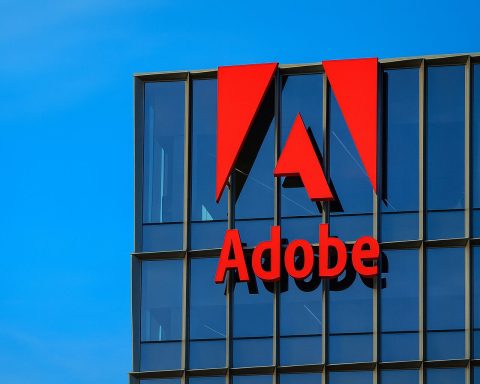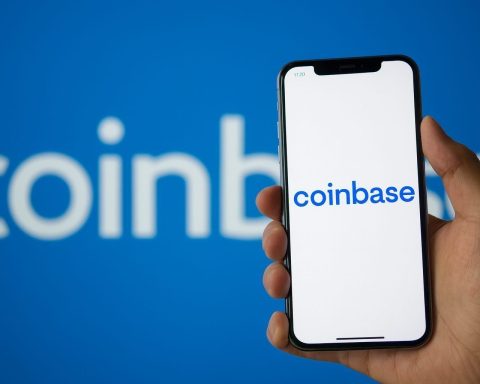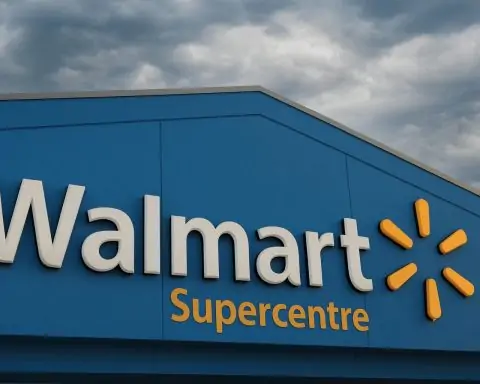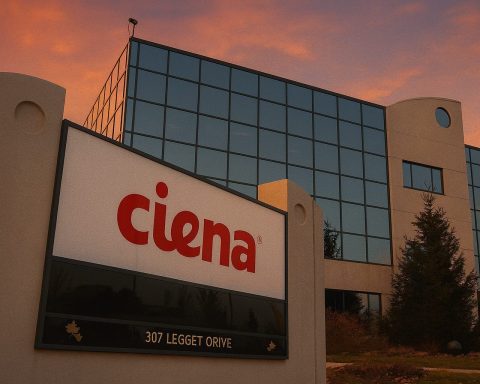- By the end of 2023 Liechtenstein completed a nationwide Fiber-to-the-Home rollout, connecting 99%+ of buildings to gigabit fiber and making LKW the passive network owner.
- As of early 2025, internet penetration is 97.3% with about 38.9k users out of 40k.
- The median fixed download speed is about 189 Mbps (Jan 2025), with fiber available to every home.
- Liechtenstein has three mobile operators—FL1, Swisscom Liechtenstein, and 7acht (Salt LI)—with 4G LTE coverage around 99% of the population, and 5G launched in 2023, reaching over 80–90% of residents by 2025.
- The open-access fiber network is owned by the state utility LKW, leased to more than 10 retail ISPs, with two dedicated fiber strands per unit and no retail activity by LKW, and a symmetrical 8 Gbps plan was introduced for CHF 39.90/month in 2023.
- By 2025 over 99% of premises are fiber-pass, copper was switched off early in 2024, and even rural alpine hamlets have fiber access via LKW’s duct network.
- Starlink satellite internet has been available since 2020, with Liechtenstein covered; typical performance 50–200 Mbps down, 20–40 Mbps up, 20–40 ms latency and prices around CHF 50–105 per month, plus hardware costs of CHF 250–350.
- All schools are connected with campus-wide Wi‑Fi backed by gigabit fiber, as part of the Digital Agenda 2025+, and Liechtenstein led the OECD in fixed broadband subscription penetration with 48.2 subscriptions per 100 people in 2022.
- The regulatory framework follows EU directives, copper switch-off was mandated within 12–18 months of fiber rollout, and spectrum is managed to enable roaming with Switzerland, all supervised by the Office for Communications (AK).
- Liechtenstein is regarded as a European broadband policy exemplar, with 10+ ISPs on the open-access network serving 40k inhabitants, and fiber coverage far surpassing neighboring Switzerland (46% FTTP in 2023) and Austria (41% FTTP in 2023).
Liechtenstein, a 160 km² principality nestled between Switzerland and Austria, has quietly built one of the world’s most advanced internet infrastructures by 2025. This tiny nation of ~40,000 people boasts universal fiber broadband, extensive 4G/5G mobile coverage, and even access to cutting-edge satellite internet. The result is lightning-fast connectivity virtually everywhere – from its capital Vaduz to alpine villages – often outpacing its larger neighbors in speed, coverage, and affordability. Below we present a comprehensive report on Liechtenstein’s internet access landscape in 2025, covering available access types, key providers, speeds, coverage data, government initiatives, and comparisons with Switzerland and Austria.
Overview: Nationwide Fiber and Near-Universal Internet Use
- Internet Penetration: About 97.3% of Liechtenstein’s population uses the internet as of early 2025 [1] [2]. With ~38.9k users out of 40k people, Liechtenstein has one of Europe’s highest usage rates, reflecting broad digital inclusion.
- Digital Infrastructure Leadership: By the end of 2023, Liechtenstein completed a nationwide Fiber-to-the-Home rollout, connecting 99%+ of buildings to gigabit fiber service [3]. This makes Liechtenstein one of the first countries worldwide with near-100% fiber broadband coverage [4] [5].
- Mobile Connectivity: The country has three 4G/5G mobile operators and enjoys excellent cellular coverage despite its mountainous terrain. All inhabited areas have 4G LTE, and 5G service was introduced in 2023 and continues to expand [6] [7]. Mobile subscriptions (53.9k active SIMs) exceed the population, indicating many residents use multiple devices [8] [9].
- Internet Speeds: With fiber available to every home, Liechtenstein’s fixed broadband speeds are world-class. The median fixed download speed is ~189 Mbps (as of Jan 2025) [10], and many users enjoy gigabit-level service. Mobile broadband is also fast – 4G and 5G users often see tens to hundreds of Mbps, though fixed fiber remains the gold standard for high bandwidth. Urban and rural areas show minimal speed gap thanks to uniform fiber deployment.
- Key Providers: Liechtenstein’s telecom market is small but competitive. Over 10 internet service providers (ISPs) offer fixed broadband services over the open-access fiber network [11]. On the mobile side, 3 mobile network operators (MNOs) (Telecom Liechtenstein’s FL1, Swisscom Liechtenstein, and 7acht/Salt) and at least one MVNO serve consumers [12]. Despite its size, Liechtenstein benefits from competition and choices similar to larger countries.
(Table 1 below summarizes Liechtenstein’s connectivity versus Switzerland and Austria in key metrics.)
| Metric (2025) | Liechtenstein | Switzerland | Austria |
|---|---|---|---|
| Fixed broadband coverage (FTTH) | ~99% of premises (nationwide fiber completed 2023) [13]. | ~46% of homes have FTTH (57% planned by 2025) [14]. | ~41% of households have FTTP (below EU avg) [15]. |
| Median fixed download speed | ~189 Mbps (fiber-dominated) [16]. | ~242 Mbps (mix of fiber/cable/DSL) [17]. | ~100 Mbps (many on DSL/cable) [18]. |
| 4G mobile population coverage | ~99% (virtually all inhabited areas)*. | ~99% (virtually entire population) [19]. | ~99% (virtually entire population) [20]. |
| 5G mobile coverage | Launched 2023; major towns covered, expanding nationwide by 2025. | >90% population (major operators active, urban focus). | ~85% population by 2023; targeting 100% by end-2025 [21]. |
| Main fixed ISPs & tech | 10+ ISPs on open-access fiber network (100% FTTH) [22]. | Swisscom (DSL+Fiber), Sunrise (Cable+Fiber), Salt (Fiber), etc. – mix of fiber, DSL, cable [23] [24]. | A1 Telekom (DSL/Fiber), Magenta (Cable/Fiber), others – mix of DSL, cable, growing fiber [25] [26]. |
| Top fixed broadband plans | Up to 8–10 Gbps symmetric fiber plans (e.g. 8 Gbps for CHF 39.90/mo) [27]. | Up to 10 Gbps fiber in cities (Salt offers 10 Gbps for ~CHF 49.95/mo) [28] [29]; incumbent Swisscom ~CHF 80–90 for 1 Gbps [30]. | Up to 1 Gbps on fiber/cable (gigabit plans ~€50–60/mo, e.g. Magenta/A1) [31]. |
| Mobile operators | FL1 (Telecom Liechtenstein), Swisscom LI, 7acht (Salt LI); + one MVNO [32]. | Swisscom, Sunrise, Salt + various MVNOs (shared with LI market). | A1, Magenta (T-Mobile), Drei; plus MVNOs (HoT, yesss!, etc). |
| Monthly mobile data plans | 4G/5G unlimited plans typically CHF 50–80 (roaming within CH free) [33] [34]. | Similar to LI: Swisscom ~CHF 80–100 for unlimited, Salt/Sunrise ~CHF 30–50 with promos [35] [36]. | Generally cheaper: unlimited 5G ~€30–40 with promos; competition among 3 carriers keeps prices moderate. |
Sources: Liechtenstein fiber coverage [37], Swiss & Austrian fiber [38] [39]; Speeds [40] [41] [42]; Mobile coverage/data [43] [44]; Pricing and plans [45] [46] [47].
Fixed Broadband: All-Fiber Network & ISPs
Technology: Liechtenstein has effectively retired legacy DSL and cable in favor of fiber-optics. Over the past decade, the country executed a full fiber rollout – transitioning from copper telephone lines (ADSL/VDSL) and coaxial cable to Fiber-to-the-Home (FTTH) nationwide. The project, led by the state-owned power utility Liechtensteinische Kraftwerke (LKW), reached 99% of all buildings by late 2023, including rural alpine areas [48] [49]. Each building (about 11,200 in total) received point-to-point fiber lines to every apartment and office, providing gigabit-capable connectivity to ~26,000 premises across all 11 municipalities [50]. By early 2024, the last copper telephone lines and old cable TV networks were being decommissioned, as all users migrated to fiber services [51] [52]. The result is zero “last-mile” digital divide – even remote villages in the mountains now have the same fiber access as the capital Vaduz [53] [54].
Open-Access Model: Uniquely, Liechtenstein’s fiber network is operated as wholesale-only open infrastructure. LKW (100% state-owned) owns the passive fiber network (ducts, cables, central offices) and leases fiber connections to retail ISPs on a non-discriminatory, cost-oriented basis [55] [56]. LKW provides two dedicated fiber strands per unit (for redundancy/competition) and offers no retail services itself [57] [58]. This structural separation ensures that all ISPs get equal access to the fiber network at regulated prices [59] [60]. The strategy eliminated redundant infrastructure and fostered a vibrantly competitive ISP market despite the small population [61] [62]. Indeed, more than 10 retail broadband providers (serving home and business customers) operate in Liechtenstein, all riding on LKW’s fiber [63]. No single incumbent monopoly dominates – customers can choose from local ISPs and even foreign providers entering the market.
Key Broadband ISPs: The former incumbent Telecom Liechtenstein AG (branded FL1) is one major player, but it now competes with numerous rivals. Notable ISPs include: Hoi Internet AG, SupraNet AG, kyberna AG, GMG, Newsnet, TV-COM and others, as well as Telecom Liechtenstein (FL1) itself [64] [65]. Some neighboring-country operators have also entered – for example, Swisscom (Switzerland’s telecom giant) offers services in Liechtenstein via the open network. This competition has driven affordable pricing and high service quality. Broadband packages in Liechtenstein are often cheaper per gigabit than in Switzerland or Austria, thanks to the low wholesale costs and multi-ISP rivalry. For instance, a new market entrant in 2023 introduced a symmetrical 8 Gbit/s fiber plan for just CHF 39.90 per month [66] – an extremely competitive price for multi-gig broadband. Common consumer plans range from ~100 Mbps basic tiers up to 1 Gbps and multi-gig options, typically with symmetrical upload/download (a benefit of the point-to-point fiber system). Even the 8 Gbps tier is available (using XGS-PON or dedicated fiber links), highlighting how “future-proof” the network is.
Service Quality: Because each ISP gets an unshared fiber strand to the customer, they can run their own equipment and offer full speeds without contention [67] [68]. Congestion is virtually non-existent – notably, during COVID-19 lockdowns the Liechtenstein network saw no capacity issues or outages, partly due to this design [69] [70]. Users commonly report actual speeds matching advertised speeds, low latency (excellent for video calls and gaming), and reliable uptime. The fiber rollout also enabled advanced services: e.g. ultra-HD IPTV, cloud backups, and smart home/IoT applications are widely adopted since gigabit service is available countrywide. Crucially, rural users enjoy the same gigabit options as urban users [71] – there is no urban-rural speed divide. This is a stark contrast to many countries where remote areas remain on slow DSL or wireless; in Liechtenstein, a farmhouse on an Alpine slope can get gigabit fiber just like a downtown office.
Coverage: By 2025, effectively 100% of households and businesses can connect to fiber broadband (the last few building owners who hadn’t joined were encouraged to hook up as copper was turned off). Official figures show over 99% of premises passed by fiber [72], and any remaining unconnected units were being finished in early 2024. Even high-altitude hamlets and ski-area facilities have fiber access, often via LKW’s extensive duct network (LKW leveraged power grid infrastructure to lay fiber even to hard-to-reach spots) [73] [74]. In summary, Liechtenstein’s fixed broadband landscape in 2025 is one of ubiquitous FTTH – an internationally acclaimed success (LKW’s project won the European Broadband Award 2022 for demand generation and universal coverage [75] [76]).
Mobile Data: 4G Everywhere and 5G on the Rise
Liechtenstein’s mobile network operators ensure that citizens are well-connected on the go. Despite its small size, Liechtenstein has a unique mobile setup influenced by its proximity to Switzerland:
- Operators: There are 3 primary MNOs with Liechtenstein coverage and numbering: Telecom Liechtenstein (FL1), Swisscom Liechtenstein, and 7acht (a brand of Salt Mobile Switzerland) [77]. FL1 is the local incumbent (majority-owned by the state, with Telekom Austria as a minority partner) [78] [79]. Swisscom and Salt operate Liechtenstein subsidiaries or roaming agreements, effectively making the same triad of Swiss carriers present in the country. Additionally, at least one MVNO (Mobile Virtual Network Operator) uses the +423 Liechtenstein numbering – for example, “Lie-Mobile” or others focusing on budget plans [80]. This means consumers can choose plans from FL1, Swisscom, Salt/7acht, or even Swiss-based offers, creating a competitive mobile market for 40k residents.
- Coverage:4G LTE coverage is essentially 99% of the population. Given Liechtenstein’s compact geography (~25 km end-to-end) and collaboration with Swiss networks, all villages and main roads have strong 4G signal. The country had GSM/GPRS 2G and UMTS 3G for many years, but notably 3G was shut down by all operators on 31 Dec 2023 [81] [82]. This was part of an upgrade strategy to focus on 4G/5G. Thus in 2025 Liechtenstein’s mobile networks are 4G/5G only (with 2G also retired earlier in Swiss/Liechtenstein by 2021). LTE penetration is universal – if you have a phone, it’s using 4G at minimum. 5G has made rapid progress: Telecom Liechtenstein (FL1) launched 5G NR service in mid-2023 after upgrading its Nokia infrastructure [83] [84]. By 2025, 5G signals blanket the most populated areas – all the main towns (Vaduz, Schaan, Triesen, etc.) and industrial zones have 5G coverage from at least one operator. High-traffic corridors like the Rhein Valley highway are covered as well. While exact 5G coverage stats for Liechtenstein aren’t publicly broken out, it likely parallels Swisscom’s network – Swisscom (which is the largest provider in LI too) had Switzerland-wide 5G to >90% population by 2024, so Liechtenstein is not far behind. Conservative estimate: over 80–90% of Liechtenstein’s population had access to 5G by 2025, with full nationwide 5G coverage expected soon [85]. In any remaining 5G “gaps” (e.g. a remote alpine farmhouse), 4G LTE is still available at good speeds. No region is left unserved: even ski resorts and rural municipalities enjoy solid mobile signals (useful for tourism, IoT sensors, etc.).
- Network Integration with Switzerland: A remarkable aspect is that Liechtenstein’s mobile system is tightly integrated with Switzerland’s. Through a longstanding treaty, Liechtenstein and Swiss networks allow seamless roaming at no extra cost [86] [87]. For example, a Swisscom-Liechtenstein subscriber can travel anywhere in Switzerland and use Swisscom’s network without roaming fees, and vice versa. Telecom Liechtenstein (FL1) customers roam onto Salt’s Swiss network for free when in Switzerland [88]. Essentially, the +423 networks act like extensions of Swiss networks. This benefits Liechtensteiners who often cross the border for work or leisure, and ensures coverage doesn’t drop at the border. It also means the same high standards of Swiss networks (ranked among the best in Europe) are enjoyed in Liechtenstein. Notably, Sunrise (another Swiss operator) has no local network in Liechtenstein and treats it as roaming, so Sunrise users face fees in LI [89] – thus most locals choose FL1, Swisscom, or Salt (7acht) which treat Switzerland+Liechtenstein as one zone.
- Mobile Speeds: With modern 4G and emerging 5G, mobile broadband in Liechtenstein is fast. 4G LTE-A provides up to 300 Mbps in many areas (using bands 3, 7, 20 etc., as licensed in Liechtenstein [90]). The typical real-world 4G download might be 50–150 Mbps, with strong signals thanks to the dense tower network. 5G brings even higher throughput: in early deployments (using mid-band spectrum), users have seen hundreds of Mbps, and in theory 5G could reach 1–2 Gbps peaks [91] [92]. FL1’s 5G network promises peak data rates up to 10 Gbps with future enhancements [93], although current devices and spectrum limit typical speeds to lower. Importantly, 5G greatly lowers latency (useful for real-time applications like AR/VR or industrial IoT). By eliminating 3G, Liechtenstein ensured all mobile data users are on high-speed networks (3G was only ~42 Mbps max). Median mobile speeds aren’t published for Liechtenstein alone (due to its small sample), but given the shared infrastructure, one can infer performance on par with or better than Switzerland’s. Swiss median mobile download was ~98–100 Mbps in 2023–24 rankings (thanks to widespread 5G) – Liechtenstein likely approaches that level. Coverage and capacity are so good that even mobile broadband could substitute for fixed in a pinch (though given everyone has fiber, fixed-mobile substitution is uncommon in Liechtenstein [94] [95]).
- Pricing & Plans: Mobile plans in Liechtenstein are similar to Swiss offerings. As of 2025, unlimited 4G/5G data plans with calls+SMS are priced around CHF 50–80 per month [96]. For example, FL1’s LIFE postpaid subscriptions include unlimited roaming in 50 countries (EU/EEA) and cost in that range, with cheaper “lite” options capping speeds or data. Data-only plans and prepaid options exist too, but interestingly FL1 itself does not sell prepaid SIMs; those needing prepaid often buy a Swisscom or 7acht SIM which work locally [97] [98]. Swisscom LI and 7acht (Salt) have prepaid and contract plans that mirror their Swiss prices (often high by EU standards). However, competition and promotions are increasing: for instance, Swisscom’s secondary brand or Salt might offer an unlimited plan for ~CHF 30–40 on sale [99]. It’s worth noting that because Liechtenstein is in the EEA but its SIMs are considered “Swiss” for roaming rules, local SIMs don’t get EU roam-like-home benefits [100] [101] – meaning a Liechtenstein SIM roaming in the EU may incur surcharges. Many residents solve this by either using Swiss/EU SIMs or leveraging the free Swiss roaming (i.e., treat their usage in EU as if from Switzerland). In-country, there are no domestic roaming fees among the networks (since each operator covers the whole country anyway). Overall, mobile costs in Liechtenstein are comparable to Switzerland’s (which are higher than Austria/EU), but users get premium network quality and roaming inclusion into Switzerland (which adds value).
- Use Cases: Virtually everyone carries a smartphone (135% mobile penetration) [102]. 4G/5G is heavily used for social media, streaming, navigation, and business. IoT and M2M connections are also significant – many companies use the mobile network for connected devices, and FL1/Swisscom provide M2M SIM services that treat CH+LI as one area. Because Liechtenstein has many commuters and cross-border workers, the integrated network ensures they remain connected across borders seamlessly.
In summary, Liechtenstein’s mobile internet in 2025 is modern and robust – with no 3G nostalgia, full 4G saturation, and a fast rollout of 5G that keeps the country at the forefront of wireless tech. Combined with ubiquitous fiber backhaul, even cell towers in rural spots have high-capacity links (often fiber-fed), supporting strong mobile broadband everywhere.
Satellite Internet: Starlink and Other Options
Even with nearly ubiquitous terrestrial networks, Liechtenstein hasn’t been left out of the new wave of satellite internet. In 2025, Low-Earth Orbit (LEO) satellite broadband is available as a complementary option:
- Starlink: SpaceX’s Starlink constellation – which provides high-speed, low-latency internet from thousands of LEO satellites – is available in Liechtenstein. Starlink, active since 2020, now serves around 130 countries and territories worldwide [103], and Liechtenstein is within its European coverage footprint (the service expanded across central Europe by 2022). Residents anywhere in Liechtenstein (especially those up in the mountains or in remote chalets not served by fiber – if any such locations remain unconnected) can order a Starlink kit. Coverage: Starlink’s coverage map shows full service availability in the Liechtenstein/Alpine region. The user simply needs a clear view of the sky to connect; the entire country falls under Starlink’s satellite beams, so there are no coverage dead zones. Performance: Starlink typically delivers 50–200 Mbps down and ~20–40 Mbps up, with ~20–40 ms latency – good enough for most applications and on par with a decent 4G connection. In Liechtenstein, where fiber offers gigabits, Starlink won’t beat fiber on speed or ping, but it provides a mobile and off-grid alternative. Hikers, RV campers, or emergency services could use Starlink for connectivity in the mountains. It’s also a backup for critical connectivity (e.g., if a fiber line is accidentally cut, a business could failover to Starlink temporarily).
- Cost of Starlink: Starlink in central Europe costs roughly CHF/EUR ~$50–100 per month depending on plan. In mid-2025 Starlink introduced new pricing models, such as Residential Lite vs Standard, and region-specific rates. For example, standard unlimited service is around $120 (≈ CHF 105) per month in many countries, while a “Limited” plan with 50 GB might be ~$50 [104] [105]. The one-time hardware kit (dish + router) costs around CHF 250–350 as of 2025 [106]. These prices are higher than a fiber subscription in Liechtenstein (which can be as low as CHF 40), so Starlink is likely used only by specific needs – e.g., remote alpine huts, disaster recovery, or tech enthusiasts. It’s noteworthy that given Liechtenstein’s wealth and mountainous terrain, some remote cabin owners might indeed invest in Starlink to have internet off-grid. Regulation: Liechtenstein’s telecom regulator has allowed Starlink terminals – being part of the European Economic Area, they generally follow EU standards, and Starlink has EU market authorization. There are no known legal barriers, and import of Starlink kits is straightforward.
- Other Satellite Providers: Prior to Starlink, only geostationary satellite (GEO) internet was an option (e.g. via Eutelsat KA-SAT or Viasat). Those services (often around 20–50 Mbps with high ~600 ms latency) were used by a handful of users in extremely remote spots. With full fiber coverage, the need for GEO satellite in Liechtenstein is negligible now. Starlink’s arrival essentially replaced older sat services due to its far superior speeds and latency. As of 2025, Starlink is the primary satellite broadband option used. However, one could also subscribe to other emerging LEO constellations like OneWeb or Amazon’s Project Kuiper in the near future – though they were not yet broadly available in 2025. For maritime or rugged mobile scenarios, services like Iridium Certus or Inmarsat could provide low-bandwidth internet (e.g., for mountaineering expeditions or IoT sensors in the high Alps).
- Use Cases in Public Sector: The government views satellite internet as a resilience tool. For example, civil defense and emergency units have Starlink kits that can be deployed if terrestrial networks fail (e.g., in an extreme scenario like natural disaster knocking out infrastructure). Additionally, satellite connectivity ensures that 100% of Liechtenstein is technically covered by some form of internet – even the peaks of the Alps above inhabited areas get signal from above. This aligns with Liechtenstein’s goal of universal connectivity (truly leaving no one offline, anywhere).
In essence, while satellite internet is not a primary access mode for most Liechtenstein residents (because fiber and 5G are superior locally), it remains an important complement. It provides redundancy and coverage beyond the grid. With Starlink’s ongoing growth (SpaceX had ~4 million users by late 2024 [107]), a few dozen Liechtenstein households or businesses likely use it as of 2025 – especially those in transient setups or requiring a backup link. And as satellite technology advances, Liechtenstein is already prepared to leverage it (for instance, Salt (7acht) has plans with SpaceX to enable direct satellite-to-phone service in the future [108]).
Public and Institutional Internet Access
Liechtenstein’s digital transformation extends to schools, businesses, and public institutions, ensuring that high-quality internet is available not just privately, but across society:
- Schools and Education: All schools in Liechtenstein are connected to broadband, with the nationwide fiber network linking every school campus. The government’s Digital Agenda set a goal that “all public schools be equipped with Wi-Fi and mobile devices” [109] [110]. This has been achieved – by mid-2020s, every school has campus-wide Wi-Fi networks (fed by gigabit fiber backhaul), and students have access to tablets or laptops provided under the School ICT initiative [111] [112]. During the COVID-19 pandemic, Liechtenstein managed the shortest distance-learning period in Europe [113], partly because robust home connectivity and quick provision of devices allowed students to learn remotely effectively. Now, digital tools are integrated into everyday learning: cloud platforms, educational software, and even experimental technologies (e.g. VR in labs) leverage the excellent connectivity. All teachers have broadband at school and most at home, enabling a seamless digital workflow. The education strategy “2025+” emphasizes strengthening digital skills, reflecting in curriculum updates and teacher training [114] [115]. In short, internet access in schools is no longer a limitation – bandwidth is plentiful, so the focus is on using it pedagogically (e.g., coding classes, online research, virtual exchanges, etc.). Students grow up taking for granted that they can stream educational videos or join video conferences without hiccups – something not universally true in all countries’ schools.
- Businesses and Industry: Liechtenstein is a business-friendly finance and manufacturing hub (with many SMEs and some larger companies, e.g. in precision instruments). These enterprises benefit from world-class connectivity. Every office park, factory, bank, and shop can get fiber lines, often with dedicated enterprise-grade services (e.g., guaranteed symmetric gigabit, SLAs, etc.). The open fiber network allows specialized providers to offer business internet, VPN, and datacenter connectivity at competitive prices. As a result, businesses in Liechtenstein enjoy average fixed speeds often higher than in Zurich or Vienna. There’s widespread adoption of cloud computing and digital processes; by end of 2022, Liechtenstein actually led the OECD in fixed broadband subscription penetration (48.2 per 100 people) [116] [117] – indicating many businesses have multiple lines or redundant connections. Financial companies rely on secure, low-latency links for trading and data backup (some use Liechtenstein as a backup site for Swiss data, leveraging the close networks). Even niche needs like international connectivity are met by cross-border fiber routes – Liechtenstein is connected to Swiss and Austrian internet exchange points (the Rheintal IX has nodes in LI) to ensure diverse routing for global traffic [118]. Public Wi-Fi is available in many commercial areas; Telecom Liechtenstein operates Wi-Fi hotspots (e.g., in city centers, government buildings) where residents and visitors can get online via a “Telecom Liechtenstein” SSID [119] [120]. In summary, businesses and public institutions are not hindered by connectivity – the infrastructure supports advanced digitalization (from smart factories to e-banking and beyond).
- Government and Public Services: The Liechtenstein government has driven e-government initiatives under its Digital Agenda. All government offices are interconnected with high-speed links. Citizen services (like e-ID, online tax filing, digital registers) are delivered over a reliable network. Public libraries, museums, and community centers offer free internet access points as a public service. Internet in public institutions is considered a utility – just like electricity or water – and thus funded and maintained accordingly. Moreover, Liechtenstein has invested in cybersecurity and redundancy for these critical connections (e.g., government networks have backup fiber paths and even satellite backup where appropriate, to ensure continuity of operations). The small size of the country means even municipal buildings in each village have fiber – for instance, the local town hall in a rural municipality will have gigabit internet, enabling video-conferences with central government, digital citizen records access, etc., without delay. Schools and municipal offices also share a secure network for educational and administrative data.
- Public-Private Initiatives: There are programs to ensure no one is left offline due to cost or ability. For example, some telecom providers offer discounted internet for low-income households or seniors (though poverty is low in Liechtenstein, inclusivity is still emphasized) [121]. There are digital literacy programs to help elderly people use the internet, as having 97% online means only ~3% (mostly older residents) are not using it [122] [123]. The government and NGOs work to bring that closer to 100% through training and perhaps subsidized devices or connectivity for the remaining offline individuals.
In essence, schools, businesses, and government in Liechtenstein all leverage the country’s top-tier internet access. From kindergartens streaming educational cartoons to factories uploading big CAD files to cloud servers, the infrastructure handles it with ease. The universal fiber network and strong mobile coverage form a backbone that makes digital services readily available in all aspects of life.
Government Policies, Regulation & Digital Infrastructure Initiatives
Liechtenstein’s impressive internet landscape did not happen by accident – it is the result of forward-thinking government policy, regulation aligned with EU standards, and strategic investment. Key aspects include:
- Digital Agenda & Goals: The government formally adopted a Digital Agenda around 2017, which included the ambitious goal of “guaranteeing 1 Gbps symmetric internet for everyone by 2023” [124]. This political commitment set the stage for the fiber rollout. By pledging to be one of the first fully fibred nations, policymakers created a conducive environment for LKW and telecom players to act. Indeed, in 2017 the government decided LKW would extend fiber to all buildings and mandated cooperation from service providers [125] [126]. The Liechtenstein broadband strategy effectively prioritized nationwide Fiber-to-the-Building (FTTB) as critical infrastructure, akin to roads or electricity.
- Role of LKW (State Utility): The government empowered LKW (the power company) via legislation (the Act on LKW, Article 5) to build telecommunications ducts and fibers as a public infrastructure [127] [128]. LKW’s ownership strategy, overseen by the state, explicitly includes providing “needs-based network infrastructure” to all service providers [129]. By using a state entity with a long-term utility mindset, Liechtenstein avoided the pitfalls of private telecoms under-investing in unprofitable areas. No direct subsidies were needed – LKW invested its own capital (recoverable via wholesale fees over decades), accepting utility-level returns [130] [131]. The regulator ensured LKW’s wholesale prices are cost-oriented so that it can recoup investments while keeping access affordable [132]. The policy of mandatory copper switch-off within 12–18 months of fiber rollout to each area was also government-backed, to accelerate adoption [133] [134]. This forced even reluctant users to move to fiber, boosting take-up and helping ISPs consolidate operations on one network.
- Telecom Regulation: Liechtenstein, as part of the EEA, follows EU telecom frameworks. The Office for Communications (Amt für Kommunikation, AK) is the national telecom regulator. It regulates spectrum, interconnection, and since 2024, the terms for access to LKW’s fiber. In October 2023, the regulator set specific wholesale prices and conditions for LKW’s fiber (for local loops, backhaul fibers, duct access, collocation, etc.), effective Jan 2024 [135]. This ensures transparency and prevents any anti-competitive behavior. Liechtenstein implemented EU directives like the European Electronic Communications Code, so consumer protections (number portability, net neutrality, etc.) mirror EU standards. For example, net neutrality is upheld – ISPs cannot unfairly throttle or prioritize traffic; with abundant fiber capacity, this has been easily maintained. Universal Service: Interestingly, Liechtenstein does not need a designated universal service provider for broadband or telephone, because universal coverage is achieved through the market (with LKW’s network) [136]. The regulator therefore did not have to levy USO fees – a unique case where universal access is “a given” via infrastructure competition [137].
- Spectrum & 5G Policy: The government managed spectrum allocations in coordination with Swiss authorities (Liechtenstein’s spectrum bands are harmonized with Switzerland’s to facilitate roaming). In 2019–2020, they allocated new 5G spectrum (e.g. 3.5 GHz band) to operators. Instead of a revenue-focused auction, Liechtenstein likely used an assignment or coordinated approach to give frequencies to FL1, Swisscom, Salt – under commitments to deploy service. Indeed, FL1 received rights in Jan 2023 to use new 5G frequencies by re-farming some bands [138]. This regulatory flexibility enabled a quick 5G launch. Also, because Liechtenstein is small, it didn’t pursue mmWave 26 GHz 5G initially, focusing on coverage bands. The legal framework initially did not allow full 5G (possibly related to core network or slicing regulations) but was being updated [139]. By 2025, the laws were catching up to allow advanced 5G uses (e.g. private networks, higher transmission power, etc.). There’s also cross-border frequency coordination to avoid interference, given Liechtenstein’s towers may overlap with Swiss/Austrian signals in border areas.
- Investment and Funding: Direct government spending was minimal because LKW funded fiber and operators funded mobile upgrades. However, government did support certain investments: e.g., the “Broadband Austria 2020” program’s funds were not accessible since Liechtenstein isn’t EU, but they likely got some EEA grants or at least knowledge transfer. The government did invest in digital literacy, e-government, and incentives for SMEs to digitalize. Also, they invested in the Rheintal Internet Exchange (Rheintal IX) as a partner to improve regional internet traffic routing [140] [141]. The government’s Innovation and Technology office encourages startups in ICT, leveraging the excellent connectivity as a selling point.
- Comparative Policy Edge: While Switzerland debates fiber regulation (Swisscom’s dominance and legal tussles over P2P vs GPON), and Austria struggles with fragmented fiber builds, Liechtenstein’s policy of one passive network, many active providers stands out as a best practice. EU officials have even highlighted it: “Liechtenstein is internationally unique – probably the only country where vertical separation via a passive open access network truly works, creating an exceptionally competitive market (>10 broadband operators for 40k inhabitants)” [142]. This policy yields maximized consumer welfare, with lower prices and high innovation [143] [144]. The government actively shares these learnings in European forums (Liechtenstein often cites that it met the EU’s Gigabit Society targets early).
- Ongoing Initiatives: In 2024–2025, Liechtenstein is not resting – the government is looking at “Gigabit Society 2030” goals which include ensuring multi-gigabit readiness, fostering 5G use cases (smart city, autonomous systems), and possibly exploring 6G research. Investments are being made in cybersecurity (a national CERT was established) and in data center infrastructure to keep data local and secure. Liechtenstein’s government also works with Switzerland on a joint “digital region” concept, since economies are intertwined. There’s continuous monitoring of broadband QoS by the regulator, and if any ISP fails to deliver promised speeds or quality, they can be pressed to improve.
- Consumer Empowerment: Regulations ensure that consumers can switch providers easily (porting numbers, quick fiber ONT reconfiguration). Since every ISP can serve every address via LKW’s fiber, consumers have true choice. The government runs awareness campaigns so people know they can shop around for the best internet deals – which further keeps providers on their toes to offer good value.
In short, Liechtenstein’s public policy has been proactive and pro-competition. By treating internet access as essential infrastructure and aligning laws to EU best practices, the country has achieved something many larger nations still struggle with: near-universal, affordable, ultra-fast internet. It’s a case study in successful broadband policy, aided by the country’s small scale and cooperative approach between government, utility, and telecom firms.
Comparison with Switzerland and Austria
Liechtenstein’s neighbors, Switzerland and Austria, are wealthy countries with advanced telecom networks – yet Liechtenstein holds its own and in some aspects outpaces them. Here’s a comparative look at cost, quality, and access:
- Broadband Coverage & Access: Liechtenstein’s 99% FTTH coverage beats both Switzerland and Austria by a wide margin. Switzerland, for all its tech prowess, had only ~46% of homes with fiber access by 2023 (though nearly all have some broadband via DSL or cable) [145]. Switzerland plans to reach ~75–80% fiber coverage by 2030 [146] – a goal Liechtenstein already surpassed in 2022 [147] [148]. Austria lags further with ~41% FTTP coverage as of 2023 [149], relying still on DSL and cable for many users. This means Liechtenstein’s rural areas are far better served than rural Swiss or Austrian areas. In Austria, DSL at 10–50 Mbps is common in villages, whereas in Liechtenstein even an alpine farm can have gigabit fiber. That translates to a digital advantage – Liechtenstein’s citizens and businesses enjoy more equal opportunities regardless of location.
- Internet Speeds: Thanks to ubiquitous fiber, Liechtenstein’s average and median speeds rank among the world’s fastest. The median download ~189 Mbps [150] places it roughly in the global top 20 for fixed speeds (faster than large countries like Germany or UK). Switzerland’s median ~242 Mbps is actually higher (Switzerland topped world rankings in some reports) [151], likely due to high fiber adoption in cities and perhaps more Speedtest power users. But in practice, Liechtenstein’s typical user has access to multi-hundred Mbps and could easily subscribe to 1–8 Gbps. Austria’s speeds are improving but median ~100 Mbps [152] trails Liechtenstein – many Austrians still on sub-100 Mbps lines, whereas every Liechtensteiner can get 1000+ Mbps if desired. In mobile, Swiss networks often top charts (e.g., Swisscom 5G is very fast), so Swiss mobile might be a tad faster on average than Liechtenstein’s. Austria’s mobile is also strong (99% 4G coverage, 85% 5G pop coverage) [153] [154], so on mobile speeds Liechtenstein is comparable but not distinctly ahead; all three countries have excellent 4G and emerging 5G. The key difference: consistency – in Liechtenstein even the countryside has great speeds, whereas in Switzerland/Austria those outside major towns might still be on slower links or waiting for fiber.
- Pricing (Cost): One might expect Liechtenstein’s small market to have high prices, but surprisingly broadband costs are quite competitive. The introduction of multiple ISPs drove prices down. For example, Liechtenstein’s 8 Gbps for CHF 39.90 [155] is astonishingly low – in Switzerland, the incumbent’s 10 Gbps or even 1 Gbps plans cost double that (CHF 80–90) [156]. Even disruptor Salt in Switzerland charges CHF 49.95 for 10 Gbps [157], slightly more than the Liech entrant’s price. So per megabit, Liechtenstein broadband is cheaper. However, we must note that average Swiss incomes are higher, and Swisscom bundles TV/phone, etc., so value perception can vary. In Austria, broadband is cheaper in absolute terms (typical €50 for gigabit [158]), but Austrian plans often have lower speed or data caps historically. Liechtenstein’s ISP competition means consumers got better deals than one might find in, say, rural Switzerland where Swisscom is the only option. On mobile, prices in Liechtenstein align with Switzerland’s relatively high levels. Swiss and Liech customers pay around CHF 60–80 for unlimited premium mobile plans [159], whereas Austrians pay maybe €40 (CHF 40) for similar or get more data for less due to EU competition. Austria’s mobile market is known for aggressive pricing (promos for €10–20 plans with lots of data), whereas Swiss/Liech market is premium (though Salt and Sunrise have narrowed the gap). So for mobile cost, Liechtenstein is more expensive than Austria, similar to Switzerland. But Liechtenstein users might argue they get two countries’ coverage (CH+LI) included, which Austrians do not.
- Quality and Reliability: All three countries have high-quality networks. Switzerland and Liechtenstein likely lead in reliability – Swiss networks are famously robust, and Liechtenstein benefits from that standard plus a brand-new fiber plant. Austria’s networks are solid too but not uniformly modern (old DSL in places can be less reliable). Liechtenstein’s tiny size gives it an edge in customer support and maintenance – issues can be fixed quickly by local teams. Also, the open-access model means if one ISP gives poor service, the customer can switch without needing a new line – a flexibility not always present in Switzerland (where Swisscom’s network issues might affect all using it). Latency: Liechtenstein’s internet likely has slightly lower latency to European hubs than Austria’s, simply due to geographic proximity (it’s closer to Frankfurt/Milan than Vienna is). This benefits e-gamers and finance. But these differences are minor (on fiber, a few milliseconds).
- Policy and Investment: Switzerland has taken a slower, market-driven approach to fiber (with legal battles – e.g., Swisscom was ordered to stop some GPON rollout in 2021 due to competition concerns). Austria’s fiber rollout has been fragmented among regions and slower in rural areas, needing subsidies. Liechtenstein, by contrast, leapfrogged with a decisive state-led rollout. This centralized approach wouldn’t scale easily to a big country, but for a microstate it worked brilliantly, achieving policy goals quickly. The cost per citizen of Liechtenstein’s fiber project was high (multi-million CHF for 25k connections), but the utility model spread that cost over decades. Switzerland is now considering more government support for rural fiber (talk of CHF 3.8 billion subsidy) [160] [161] – something Liechtenstein didn’t require due to its model. So in terms of public policy success, Liechtenstein is arguably ahead, providing a case study for effective broadband strategy.
- Usage and Digital Society: In terms of actual outcomes, Liechtensteiners are extremely connected – 97% online usage [162], which is on par with Switzerland (~99% of Swiss are online) [163] and higher than Austria (around 88–90% internet usage). This suggests that in access, Liechtenstein is as good as it gets, and in adoption, it’s also basically at saturation (the remaining offline are likely elderly or by choice). Costs can be a barrier for some in Switzerland (there have been concerns about affordability, leading to some social offers) [164]. Liechtenstein’s lower broadband fees may actually make it more affordable relative to income than in Switzerland. Austria tends to have more affordable pricing relative to incomes but had an urban-rural gap. Now with heavy investment, Austria is catching up on infrastructure, but it will only reach Liechtenstein’s current fiber ubiquity by later in the decade.
In summary, Liechtenstein holds its own against its neighbors:
- It matches or exceeds Switzerland/Austria in fixed broadband speed and coverage, delivering fiber to everyone years ahead.
- It has mobile networks on par with Switzerland’s top-tier quality, whereas Austria’s mobile, while very good, is still expanding 5G coverage.
- Costs: Fixed internet in Liechtenstein can be a bargain (due to competition), whereas mobile costs are high (aligned with Swiss prices and higher than Austria’s).
- Digital outcomes: Liechtenstein, Switzerland, and Austria all rank highly in Europe’s digital indices, but Liechtenstein’s focused achievements (like complete fiber) stand out as an overachievement for its size.
One could say that Liechtenstein leveraged its small size to create a digital paradise of sorts – something Switzerland and Austria, with their larger scale and legacy systems, are working toward but haven’t fully attained yet.
Challenges and Ongoing Developments
While Liechtenstein’s internet infrastructure in 2025 is exemplary, there remain challenges and future tasks to address:
- Ensuring Full 5G Coverage & Beyond: The next milestone is to achieve 100% 5G coverage (in population and key geographies). Some remote pockets or indoor areas might still lack 5G signal. Operators will continue to densify networks (adding small cells or using lower frequencies) to fill those gaps. Additionally, planning for 6G (expected beyond 2030) is on the horizon; Liechtenstein will need to allocate spectrum and upgrade when the time comes, to remain at the cutting edge.
- Keeping Competition Alive: With Swisscom’s large presence (it’s reportedly the largest mobile operator in Liechtenstein by users [165]) and the partial state-ownership of FL1, regulators must ensure the market stays competitive. The >10 ISPs in fixed broadband is great, but consolidation could happen (smaller ISPs might merge or exit if margins shrink). The challenge is to maintain low entry barriers – LKW’s open access helps, but the regulator will oversee wholesale pricing so it’s fair for new entrants. On mobile, if, say, Swisscom were to fully acquire Telecom Liechtenstein (as was once proposed) [166] [167], that could reduce local competition. So far, that hasn’t happened (previous takeover talks didn’t materialize), but vigilance is needed.
- Tech Adoption and Digital Skills: Having top infrastructure is one thing; using it fully is another. Liechtenstein will focus on encouraging businesses (especially SMEs) to adopt advanced digital tools (cloud services, AI, IoT) to capitalize on the connectivity. Similarly, continuing to raise digital skills among all age groups is an ongoing task. The relatively small number of remaining offline citizens (approx. 2.7% of population, ~1,000 people) [168] will need targeted support to get online if they desire. Programs for seniors and lifelong learning in IT are ongoing, addressing this challenge.
- Cybersecurity and Resilience: As dependence on the internet grows (virtually all critical services run on it), cybersecurity threats are a constant concern. Liechtenstein must safeguard its networks from cyber attacks. Being connected to global networks means exposure to threats; the country has a National Cyber Security Unit working on this. Also, resilience against outages: while fiber is generally reliable, physical damage (landslides, construction accidents) could cut cables. LKW and providers likely maintain redundancy (ring architectures, backup microwave links, etc.), but continued investment in resilience (like additional backup paths, satellite backup for critical sites) is prudent. The Rheintal fiber ring around Lake Constance [169], once fully realized, will add resilience by providing alternate routes for international traffic.
- Keeping Prices Affordable: Currently prices are favorable, but inflation or external factors could change that. Ensuring that internet access remains affordable for all social strata is a policy priority. If any population segment struggles with cost (e.g., low-income families affording a broadband subscription), targeted subsidies or social tariffs might be considered. Given the prosperity of Liechtenstein, this isn’t widespread, but inclusivity is key.
- International Coordination: Liechtenstein’s networks don’t operate in isolation. They interconnect heavily with Swiss and Austrian carriers. Cross-border coordination on frequency (for mobile) and on fiber interconnects (for internet exchange) needs to continue smoothly. A challenge is that Liechtenstein is not an EU member, so it has to transpose EU telecom rules via EEA and coordinate with Switzerland (which is also outside EU frameworks). So far this has been managed well, but any divergence in regulations (for example, EU’s future roaming or data rules) could pose complexities.
- Emerging Technologies: The telecom landscape is ever-evolving. Fiber Rollout Phase 2 – though everyone is connected, LKW might consider future upgrades (like going from current GPON/point-to-point to even higher capacity XGSPON or beyond to support 25G or 50G per user in the future if needed). On mobile, the introduction of things like direct satellite-to-mobile (Starlink’s planned service with Salt) [170] or private 5G networks for industry will be new frontiers. The government and regulator will have to adapt spectrum and licensing to accommodate these innovations (e.g., allocating some 5G spectrum for campus networks if factories want their own 5G).
- Migration of Remaining Legacy Services: With copper gone, one remaining legacy is perhaps older telephone systems or TV distribution. Some citizens might still use legacy phone handsets or older TV setups. The challenge is to ensure smooth migration – e.g., that everyone has a VoIP telephone adapter if needed, or that cable TV customers moved to IPTV without losing service. By 2025 this is mostly done, but a few edge cases might linger (like some alarm systems or elevator emergency phones that worked on analog lines needing replacement). The authorities oversee that none of these are overlooked in the copper switch-off.
- Environmental and Aesthetic Considerations: The fiber and 5G rollout also brings minor challenges like equipment housing and tower placements. Liechtenstein is scenic; adding 5G small cells or fiber cabinets in villages must consider aesthetics and radiation norms. There was some public concern initially about 5G electromagnetic emissions (a global issue); authorities need to maintain transparency and meet safety standards (which they do, aligning with international guidelines – Swisscom’s field strength maps cover Liechtenstein too) [171] [172]. Sustainable practices (like energy-efficient network gear, and utilizing LKW’s renewable energy to power the network) are part of ongoing development.
Conclusion: By 2025, Liechtenstein has largely achieved what many countries aspire to: nearly universal, ultra-fast, and affordable internet access. Fixed fiber broadband reaches virtually every home and business, and mobile 4G/5G keeps people connected everywhere from city streets to mountain trails. The country’s proactive strategies – from leveraging its power utility for telecom, to partnering with Swiss networks, to embracing open access – have paid off in making Liechtenstein one of Europe’s best-connected societies. The remaining challenges are relatively minor and involve fine-tuning and future-proofing an already excellent infrastructure. As technology marches on, Liechtenstein appears well-prepared to adopt the next generation of digital innovation, ensuring its citizens and enterprises continue to enjoy the fast lane on the information highway – truly a “digital autobahn” through the Alps.
Sources:
- Liechtenstein Office for Communications – Broadband/FTTH fibre optic expansion (Feb 2025 update) [173] [174]
- Liechtenstein Office for Communications – Open Access Fibre Rollout Factsheet (March 2024) [175] [176]
- Operator Watch (Mar 21, 2024) – 5G in Liechtenstein Gains Ground [177] [178]
- DataReportal – Digital 2025: Liechtenstein (Mar 2025) [179] [180]
- Prepaid Data SIM Wiki – Liechtenstein (2023) [181] [182]
- Liechtenstein Marketing News – Liechtenstein’s fiber optic network among best (Oct 2022) [183] [184]
- TS2 Space Report – Switzerland’s Digital Backbone 2025 (Jul 2025) [185] [186]
- TS2 Space Report – Austria’s Digital Autobahn 2025 (May 2025) [187] [188]
- European Commission – FTTB for everyone, Liechtenstein (Success Story, Jul 2022) [189] [190]
- Powertec Telecom Portal – FL1 Telecom Liechtenstein (2023) [191] [192]
- European Commission – Austria Digital Decade Report 2024 [193] (for comparator data)
- Others: Swisscom Network Info [194], Rheintal-IX Workshop (2021) [195], Data sources via Wikipedia [196] [197], etc.
References
1. datareportal.com, 2. datareportal.com, 3. www.llv.li, 4. digital-strategy.ec.europa.eu, 5. www.llv.li, 6. www.operatorwatch.com, 7. www.operatorwatch.com, 8. datareportal.com, 9. datareportal.com, 10. datareportal.com, 11. www.llv.li, 12. www.llv.li, 13. www.llv.li, 14. ts2.tech, 15. digital-strategy.ec.europa.eu, 16. datareportal.com, 17. en.wikipedia.org, 18. en.wikipedia.org, 19. ts2.tech, 20. ts2.tech, 21. ts2.tech, 22. www.llv.li, 23. ts2.tech, 24. ts2.tech, 25. ts2.tech, 26. ts2.tech, 27. www.llv.li, 28. ts2.tech, 29. ts2.tech, 30. ts2.tech, 31. ts2.tech, 32. www.operatorwatch.com, 33. ts2.tech, 34. prepaid-data-sim-card.fandom.com, 35. ts2.tech, 36. ts2.tech, 37. www.llv.li, 38. ts2.tech, 39. digital-strategy.ec.europa.eu, 40. datareportal.com, 41. en.wikipedia.org, 42. en.wikipedia.org, 43. ts2.tech, 44. ts2.tech, 45. www.llv.li, 46. ts2.tech, 47. ts2.tech, 48. www.llv.li, 49. www.llv.li, 50. www.llv.li, 51. www.llv.li, 52. www.llv.li, 53. www.llv.li, 54. digital-strategy.ec.europa.eu, 55. www.llv.li, 56. www.llv.li, 57. www.llv.li, 58. www.llv.li, 59. www.llv.li, 60. www.llv.li, 61. www.llv.li, 62. www.llv.li, 63. www.llv.li, 64. db-ip.com, 65. db-ip.com, 66. www.llv.li, 67. www.llv.li, 68. www.llv.li, 69. www.llv.li, 70. www.llv.li, 71. www.llv.li, 72. www.llv.li, 73. www.llv.li, 74. www.llv.li, 75. www.liechtenstein.li, 76. www.liechtenstein.li, 77. www.operatorwatch.com, 78. portal.powertec.com.au, 79. portal.powertec.com.au, 80. www.llv.li, 81. www.operatorwatch.com, 82. www.operatorwatch.com, 83. www.operatorwatch.com, 84. portal.powertec.com.au, 85. ts2.tech, 86. www.operatorwatch.com, 87. prepaid-data-sim-card.fandom.com, 88. www.operatorwatch.com, 89. prepaid-data-sim-card.fandom.com, 90. www.operatorwatch.com, 91. www.swisscom.ch, 92. portal.powertec.com.au, 93. portal.powertec.com.au, 94. www.llv.li, 95. www.llv.li, 96. ts2.tech, 97. www.operatorwatch.com, 98. prepaid-data-sim-card.fandom.com, 99. ts2.tech, 100. prepaid-data-sim-card.fandom.com, 101. prepaid-data-sim-card.fandom.com, 102. datareportal.com, 103. en.wikipedia.org, 104. www.starlink.com, 105. www.starlink.com, 106. ts2.tech, 107. en.wikipedia.org, 108. ts2.tech, 109. education-profiles.org, 110. education-profiles.org, 111. education-profiles.org, 112. education-profiles.org, 113. education-profiles.org, 114. education-profiles.org, 115. education-profiles.org, 116. ts2.tech, 117. ts2.tech, 118. www.rheintal-ix.net, 119. www.llv.li, 120. www.hkcsl.com, 121. ts2.tech, 122. datareportal.com, 123. datareportal.com, 124. digital-strategy.ec.europa.eu, 125. www.llv.li, 126. www.llv.li, 127. www.llv.li, 128. www.llv.li, 129. www.llv.li, 130. www.llv.li, 131. www.llv.li, 132. www.llv.li, 133. digital-strategy.ec.europa.eu, 134. www.llv.li, 135. www.llv.li, 136. www.llv.li, 137. www.llv.li, 138. portal.powertec.com.au, 139. portal.powertec.com.au, 140. www.rheintal-ix.net, 141. www.rheintal-ix.net, 142. www.llv.li, 143. www.llv.li, 144. www.llv.li, 145. ts2.tech, 146. www.swisscom.ch, 147. digital-strategy.ec.europa.eu, 148. digital-strategy.ec.europa.eu, 149. digital-strategy.ec.europa.eu, 150. datareportal.com, 151. en.wikipedia.org, 152. en.wikipedia.org, 153. ts2.tech, 154. ts2.tech, 155. www.llv.li, 156. ts2.tech, 157. ts2.tech, 158. ts2.tech, 159. ts2.tech, 160. ts2.tech, 161. ts2.tech, 162. datareportal.com, 163. ts2.tech, 164. ts2.tech, 165. www.operatorwatch.com, 166. www.lightreading.com, 167. www.lightreading.com, 168. datareportal.com, 169. www.rheintal-ix.net, 170. ts2.tech, 171. www.swisscom.ch, 172. www.swisscom.ch, 173. www.llv.li, 174. www.llv.li, 175. www.llv.li, 176. www.llv.li, 177. www.operatorwatch.com, 178. www.operatorwatch.com, 179. datareportal.com, 180. datareportal.com, 181. prepaid-data-sim-card.fandom.com, 182. prepaid-data-sim-card.fandom.com, 183. www.liechtenstein.li, 184. www.liechtenstein.li, 185. ts2.tech, 186. ts2.tech, 187. ts2.tech, 188. digital-strategy.ec.europa.eu, 189. digital-strategy.ec.europa.eu, 190. digital-strategy.ec.europa.eu, 191. portal.powertec.com.au, 192. portal.powertec.com.au, 193. digital-strategy.ec.europa.eu, 194. www.swisscom.ch, 195. www.rheintal-ix.net, 196. en.wikipedia.org, 197. en.wikipedia.org










